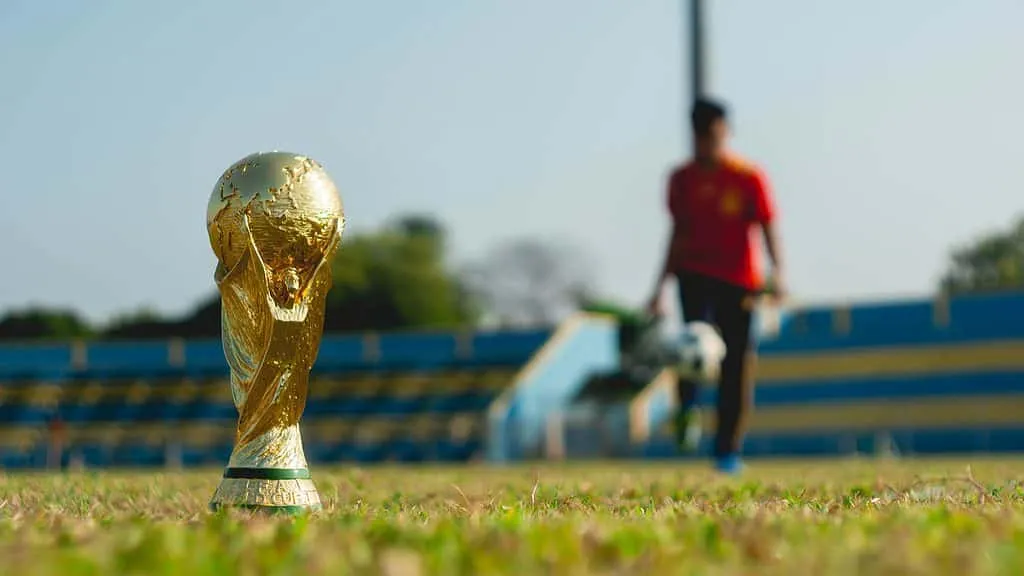The back pass rule in soccer is a law of the game that has been in place since 1992. The rule was instituted to prevent goalkeepers from using their hands to pick up the ball when it has been played to them directly by a team-mate. The back pass rule is also known as Law 12 of the Laws of the Game, or FIFA Law 12.
Prior to the rule change, the goal keeper was allowed to pick up the ball with their hands when their player pass the ball back to him. This often resulted in time-wasting and other tactics to circumvent the spirit of the game.
Introduction of the back pass rule
Football may be a competitive game that brings out the worst in many participants, but it is also a spectator sport. The attendance to football matches depends on the excitement and entertainment for the fans, and if games become dull, people will not come to watch.

This was the case during the 1990 World Cup, hosted by Italy, when the average goals per game was 2.2 – the lowest ever. To avoid having such a low-scoring tournament again, FIFA introduced the back-pass rule. This was further encouraged in 1992, when Denmark used the back-pass to waste time and win the Euro 1992 title.
Therefore, the back-pass rule was implemented in the Premier League in 1992 to prevent such dull matches and to ask more of goalkeepers who had been used to catching the ball from a defender rather than kicking it out with their feet.
Overview of the Back-Pass Rule in Soccer
The new rule states that a goalie is not allowed to touch the ball when it has been passed to them directly by a teammate. This includes when the ball is passed to them with the head, chest, knee, or other body part. If a goalkeeper does handle the ball in this situation, then the referee must award an indirect free kick to the opposing team from the spot where the ball was handled.
This rule was first introduced after a controversial incident in the 1990 FIFA World Cup semi-final match between England and Germany, where the German goalkeeper was allowed to pick up the ball with his hands after it had been passed back to him.
This led to a rule change in 1992 which stated that the goalkeeper could not handle the ball when it had been passed back to them by another player on their team
When Does the soccer Back-Pass Rule Apply?
The rule applies in any situation when the ball has been passed back to the goalkeeper by a teammate, regardless of whether it has been passed with the foot, head, chest, knee, or other body part. It also applies when the ball has been thrown in to the goalkeeper by a teammate, or when a teammate has headed the ball back to the goalkeeper. The rule does not apply to throw-ins, goal kicks, or corner kicks.
How Does it Impact the Game?
It has a significant impact on the game of soccer. It prevents the goalkeeper from being able to pick up the ball with their hands when it has been passed back to them by a teammate, which takes away a potential time-wasting tactic for the defending team.
It also prevents the goalkeeper from being able to pick up the ball with their hands when it is in the penalty area, which ensures that the attacking team is not deprived of a potential scoring opportunity.
Some Possible Violation Penalties
The most common penalty for a back pass violation is an indirect free kick for the opposing team. This means that the kick is taken from the spot of the violation and must be touched by another player before it can enter the goal.
Other possible penalties include an indirect free kick for the defense team, or a yellow or red card for the player who committed the offense. It’s important to understand these rules so that you can play soccer safely and avoid any potential penalties.
Common Mistakes
One of the most common mistakes that people make when understanding the back-pass rule is thinking that it only applies to passes made with the foot. However, the rule applies to all passes made by a teammate, regardless of whether it is made with the foot, head, chest, knee, or any other body part.
Another common mistake is not understanding that the rule does not apply to throw-in, goal kicks, or corner kicks.
The back pass rule in soccer is an important rule that was introduced in 1992 by FIFA. It prevents the goalkeeper from being able to pick up the ball with their hands when it has been passed back to them by a teammate, regardless of whether it has been passed with the foot, head, chest, knee, or other body part.
The rule also ensures that the attacking team is not deprived of a potential scoring opportunity when the ball is in the penalty area. To ensure that you understand the back pass rule, it is important to remember that it applies to all passes by a teammate and does not apply to throw-ins, goal kicks, or corner kicks.